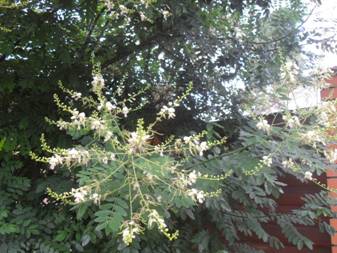
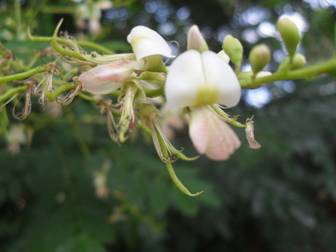
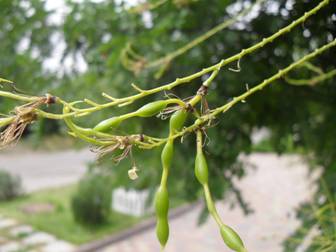
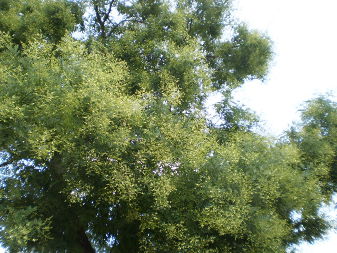
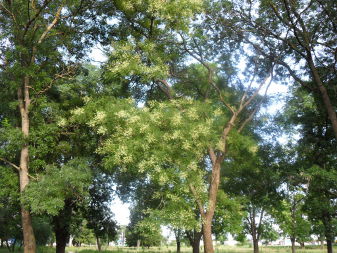
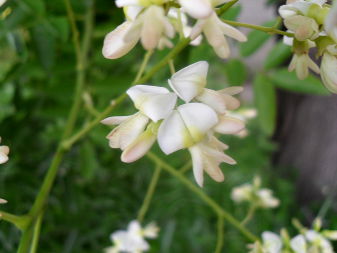
Japanese Pagoda tree, Sophora (Styphnolobium japonicum), fam. Fabaceae.
Very abundant in southern Ukraine, and even more in Crimea, where the whole windbreaks and parks often consists of this tree. All other species of Sophora genus are herbs, so this one has been recently allocated into a special genus Styphnolobium. In DVRZ suburb, we only have one small tree in Volkhovska street.
The leaves of this tree remind those of Robinia (Black Locust, false acacia), though they are not oval but slightly pointed. The spikes are absent. Japanese Pagoda trees bloom and fruit once in two years, though there is an impression that they can do it every year if summers are warm ehough. Short-lived flowers with slight sweet smell change each other in the panicle inflorescences during July-August, and they transform quickly into the fruits. The latter have no analogy in shape among our plants: they have narrow waists between the bead-like enlargements with the seeds. The fruits keep themselves succulent through autumn and winter, and in the places where these trees grow abundantly, they could be a major source of food for some migrating birds.
The unopened flower buds and fruits of Japanese Pagoda tree are used in medicine. Their main active substance is rutin, a flavonoid, also known as vitamin P. Its effects, unlike most other vitamins, were poorly reproducible in studying, fluctuating from large to very weak. However, it is considered to enhance the vitamin C action mutually, and to decrease capillary fragility, blood tension and coagulation, so it is prescribed for cardiovascular and skin diseases, ulcers, and some infections.
The plant contains some toxic substances, so it rarely suffers from pests. In accepted dosage, the alcohol tincture of Japanese Pagoda tree does not cause negative effects, but still requires careful handling.